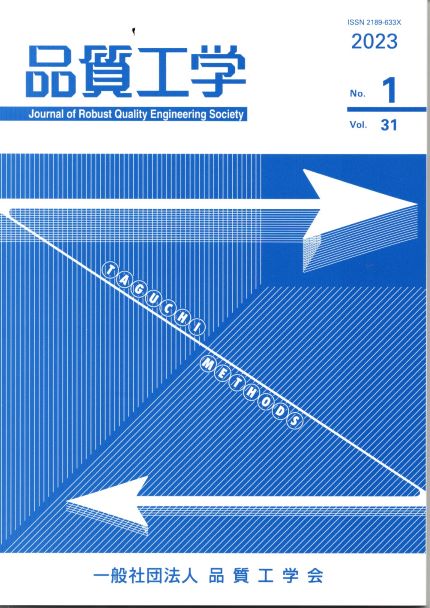巻号一覧

31 巻 (2023)
- 1 号 p. 4-
最新号
選択された号の論文の5件中1~5を表示しています
- |<
- <
- 1
- >
- >|
論説
-
─ ビジョン35を構想するためのビジョン30長期計画の活動の総括と今後の課題 ─吉澤 正孝2023 年 31 巻 1 号 p. 4-12
発行日: 2023/01/01
公開日: 2024/01/01
ジャーナル フリーPDF形式でダウンロード (2599K)
解説
-
審査表彰部会2023 年 31 巻 1 号 p. 13-20
発行日: 2023/01/01
公開日: 2024/01/01
ジャーナル フリーPDF形式でダウンロード (378K) -
編集委員会2023 年 31 巻 1 号 p. 21-30
発行日: 2023/01/01
公開日: 2024/01/01
ジャーナル フリーPDF形式でダウンロード (435K)
実施報告
-
角 有司, 中川 貴文2023 年 31 巻 1 号 p. 31-42
発行日: 2023/01/01
公開日: 2024/01/01
ジャーナル フリーRecently nonlinear simulation has been introduced into, for example, fluid analysis carried out for the design and development of spacecraft, leading to studies of the computation of robust design solutions that can withstand external disturbances. As the technology becomes more advanced and specialized, however, organizations have become more siloed, making it difficult to share information with designers in other fields. As a basis for considering parameter design, the present study describes the computation of ranges of parameter values satisfying multiple restrictions. One feature of these effective parameter ranges is that they enable multiple results to be evaluated together; another feature is that it becomes easier to share the results with other designers. To verify the effectiveness of this method, it was applied to a seismic simulation of timber structures to compute parameter ranges that would avoid collapse in a major seismic event and avoid damage in a moderate seismic event. A multilevel orthogonal array was used to improve the reproducibility of the results of the study, and a supercomputer was used to shorten the computation time. Reproducibility was studied using the shape retention method of quality engineering, and found to be high.抄録全体を表示PDF形式でダウンロード (14180K) -
─MT法によるコンピュータマウスの操作感の比較─植 英規, 渡邉 紫音2023 年 31 巻 1 号 p. 43-49
発行日: 2023/01/01
公開日: 2024/01/01
ジャーナル フリーThis report concerns the development of a technique for quantitative evaluation of the ease of use experienced by users of a product. In this technique a total of 55 features per second were derived from electrocardiogram and brainwave frequency spectra and their Mahalanobis distance(MD)was calculated by the Mahalanobis-Taguchi(MT)method. The unit space on which the quantification was based was the feature pattern in the resting state; the difference between this pattern and the patterns obtained while the product was being used was quantified by their MD. This method was tested on five subjects who used a computer mouse to click on a target on a screen. MDs were calculated for varying mouse speeds and target sizes. The MD values for four of the subjects tended to match the ease of use they reported. The MD values for another one subject reflected effects of the subject’s initial unfamiliarity with the experiment.抄録全体を表示PDF形式でダウンロード (21355K)
- |<
- <
- 1
- >
- >|